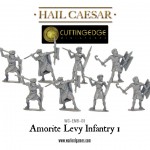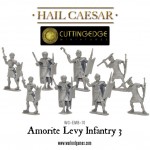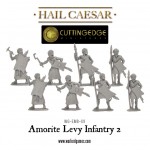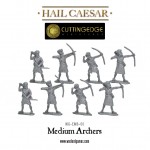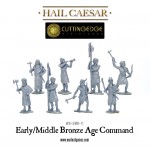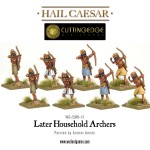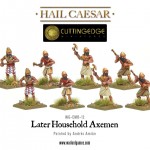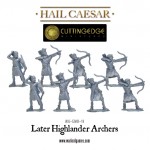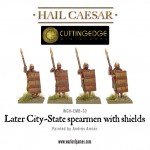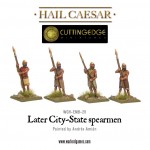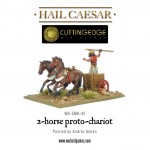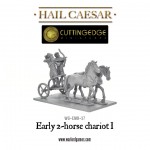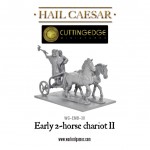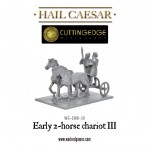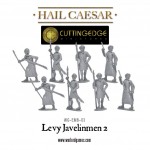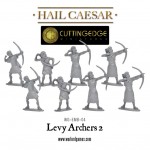Following the collapse of the Akkadian Empire about 2100BC there was a period of disorder during which the country was ruled or at least dominated by the Gutians. No-one knows exactly who the Gutians of this period were (the same name was later used to described other peoples who lived in the Zagros Mountains much later). But one thing is for sure – they were barbarians! They overran the ordered, settled and intensely irrigated lands of the Akkadian Empire. In many cases they installed their own Kings and in others they accepted the subjugation of the locals and no doubt extorted what they wanted by way of tribute. The Gutians came from the Zagros Mountains and were a savage, illiterate hill-folk, so it is likely that populations declined generally and many settlements were abandoned during this time of anarchy and woe. It’s not altogether clear how long the reign of the Gutians lasted – and the chances are that some Gutian rulers hung on even once the power of the invaders had been substantially broken – but a period of about a hundred years may be envisaged.
Despite the predations of the Gutians civilisation was not entirely destroyed and some cities evidently continued to thrive – probably whilst paying tributes to the Gutian Kings. Resistance to the Gutians may have been more widespread that we know, but eventually Utu-Hengal of Uruk and Ur-Nammu of Ur succeeded in defeating the Gutian King Tirigan and regaining control of Sumeria. From this beginning arose a reborn Sumerian Empire that we call the Third Dynasty of Ur, often written UrIII, and also known as the Neo-Sumerian Empire. After the death of Utu-Hengal, Ur-Nammu began the reconquest of Sumeria, and under his son Shulgi the Sumerians re-established their rule over much of the area previously contolled by the Akkadian Empire.
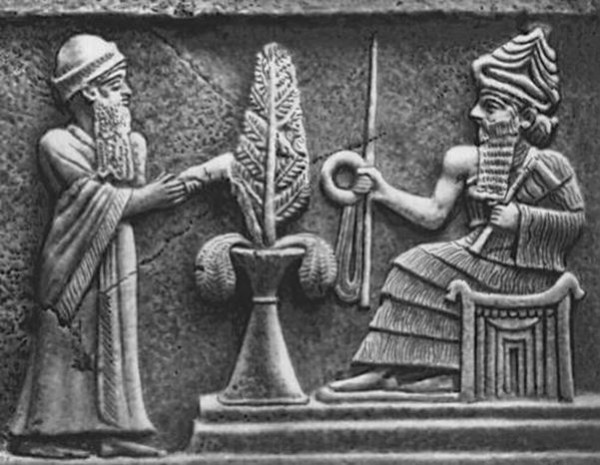
Stele of Ur-Nammu – the first King of the Third Dynasty of Ur.
The Neo-Sumerian period lasted for about a hundred years. It is sometimes referred to a renaissance in Sumerian civilisation and in particular the old Sumerian language. It was certainly a period of intense activity, with the reconstruction of roads and cities, and the reestablishment of order over the countryside. It was during this time that Ur-Nammu began the construction of the Great Ziggurat of Ur, completed by his son Shulgi.
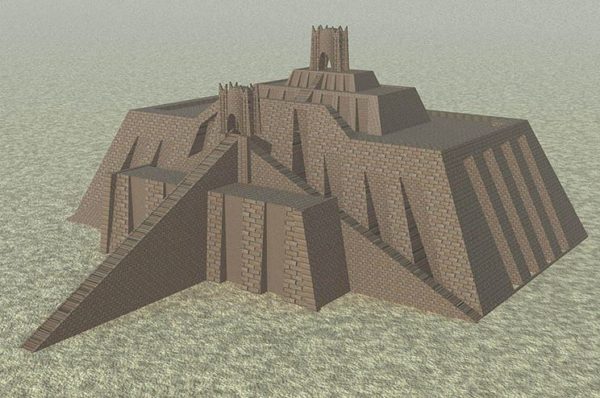
Reconstruction of Great Ziggurat of Ur began by Ur-Nammu. Dedicated to the Moon God Nanna the patron deity of Ur. Completed by Ur-Nammu’s son Shulgi.
Here is a list of the Kings of the Third Dynasty of Ur according to the most commonly used chronology.
Utu-Hengal 2119-2113
Ur-Nammu 2112-2095
Shulgi 2094-2047
Amar-Sin 2046-2038
Shu-Sin 2037-2029
Ibbi-Sin 2028-2004
Under Shulgi and his successors the Sumerians continued to campaign to the east and north. No doubt they fought partly to gain subject territories, which would have garrisons and military governors installed, and partly simply to forestall raiding and aggression by enemies into Sumeria itself. Shulgi’s early campaigns lasted for more than twenty five years and extended the empire northwards into what would become Assyria, beginning with the defeat of the city of Der and progressing northwards as far as Urbilum to the north of Ashur. To the east he fought in Elam and Anshan. His successors continued to campaign, but less actively.
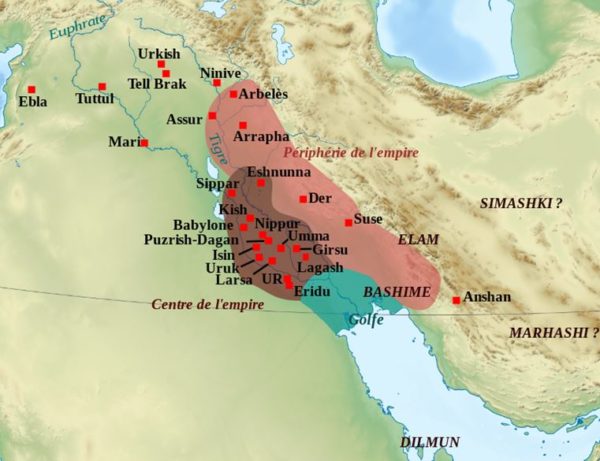
The Empire of the Neo-Sumerians at its greatest extent. The core provinces are shown in brown. The red area shows regions subject to the Sumerian King. The blue region at the bottom of the gulf shows the ancient coastline.
We can gather a lot about the armies of the Neo-Sumerians from lists of provisions and weaponry supplied to garrisons throughout the land. From these we learn that the ordinary militia carried spears, and at least some carried the traditional large, rectangular shield. Troops of Amorite origin may have carried the distinctively shaped Amorite shield instead. Others, probably the professional soldiers, carried bows – of which there were two types, one described as the ‘complex’ bow. It’s not clear what this refers to, but it may represent an improvement in the form of a composite bow of some kind. The other kinds of troops are axemen or carry a mace (ges-tukul). At least one document presents these three types in equal numbers – one third of each comprising a force.
The true chariot was still some hundreds of years from full development, but records suggests that new equid types were making an appearance – the ‘foreign ass’ as horses were at first called. The traditional battle-car was supplemented by various kinds of two-wheeled proto-chariot – the warrior now often carrying a bow rather than javelins. The names of many Neo-Sumerian commanders that come down to us include Elamites, Hurrians, and Amorites as well as Akkadians and Sumerians, so it was obviously a time of considerable cultural exchange and movement. Although we call this period Neo-Sumerian, it would be wrong to think of it as backward looking, the Kings of the Third Dynasty of Ur ruled a land that was at the forefront of military developments.
The Neo-Sumerians eventually succumbed to a resurgent Elam together with increased pressure from Amorite tribes to the northwest. One Neo-Sumerian King actually built a defensive wall between the Tigris and Euphrates to try and hold the Amorites at bay – but it was to no avail.
In Hail Caesar the Sumer and Akkad list provides the basis for an army of this period; however, we might make allowance for what we know of the increased importance of the bow in warfare, and developments of the chariot from the earlier battle-car. Although these developments rightly belong to the first quarter of the new millennium, technology does not stand still – and it is entirely reasonable to reflect this in the army list. Therefore, here is a revised army list specifically for the Third Dynasty of Ur, representing the forces of Ur and of contemporary cities of comparable status.
Third Dynasty of Ur Army List
| THIRD DYNASTY OF UR – 21th Century BC | |||||||||
| Chariots up to 25% | Up to a quarter of the units in the army can comprise chariots. | ||||||||
| Infantry 75%+ | At least three quarters of the units in the army must comprise infantry other than skirmishers. | ||||||||
| Sumerian spearmen 25%+ of infantry | At least a quarter of the non-skirmisher infantry units must be either Sumerian medium infantry with long spears. | ||||||||
| Sumerian bowmen 25%+ of infantry | At least a quarter of the non-skirmisher infantry units must be Sumerian bowmen.. | ||||||||
| Sumerian Axemen/Macemen and Royal Guard 25%+ of infantry | At least a quarter of the non-skirmisher infantry units must be Sumerian Axemen/Macemen or Royal Guard. | ||||||||
| Divisions 4+ units. | Divisions must contain at least 4 units excluding skirmishers and must be led by a commander. | ||||||||
| Skirmishers per division 50% of infantry | Divisions may contain up to half as many skirmisher units as they contain non-skirmisher infantry. | ||||||||
TROOP VALUES |
|||||||||
| Type/stats |
Combat |
Morale Save |
Stamina | Special | Points Value | ||||
| Clash | Sustained | Short | Long | ||||||
| Sumerian or medium infantry with long spear. | 6 | 6 | 3/0 | 0 | 5+ | 6 | 23 points per unit | ||
| Sumerian or medium infantry with double handed weapons | 7 | 6 | 2/0 | 0 | 5+ | 6 | 23 points per unit | ||
| Royal Guard medium infantry with double-handed weapons one unit maximum | 7 | 6 | 2/0 | 0 | 5+ | 6 | Tough Fighters | 24 points per unit | |
| Sumerian light infantry archers | 4 | 4 | 3 | 3 | 0 | 6 | 20 points per unit | ||
| Skirmishers with javelins fielded as a small unit. | 3 | 2 | 2 | 0 | 0 | 4 | 11 points per unit | ||
| Skirmishers with slings fielded as a small unit. | 2 | 2 | 2 | 2 | 0 | 4 | Levy | 10 points per unit | |
| Amorite skirmishers with bows fielded as a small unit – up to one per Amorite warband | 2 | 2 | 2 | 2 | 0 | 4 | 12 points per unit | ||
| Amorite medium infantry tribal warband with spears, javelins, bows. | 7 | 6 | 2 | 0 | 6+ | 6 | Wild Fighters | 25 points per unit | |
| Gutian light infantry with double-handed weapons and throw sticks fielded as a small unit. | 5 | 4 | 1 | 0 | 6+ | 4 | Marauders | 17 points per unit | |
| Elamite light infantry archers fielded as a small unit. | 4 | 4 | 2 | 2 | 0 | 4 | Marauders | 18 points per unit | |
| Proto- Chariots light chariots with javelin armed crew | 8 | 6 | 2 | 0 | 4+ | 6 | 28points per unit | ||
| Proto- Chariots light chariots with bow armed crew | 6 | 6 | 3 | 3 | 4+ | 6 | 30 points per unit | ||
| Commanders | 1 Commander must be provided per division. All commanders including general have Leadership 8. | Free | |||||||

